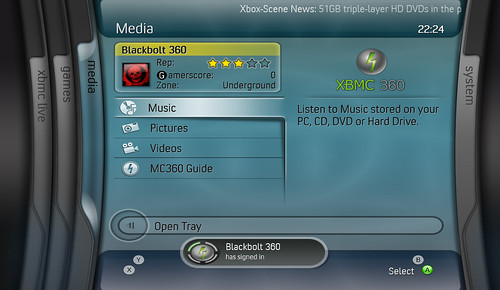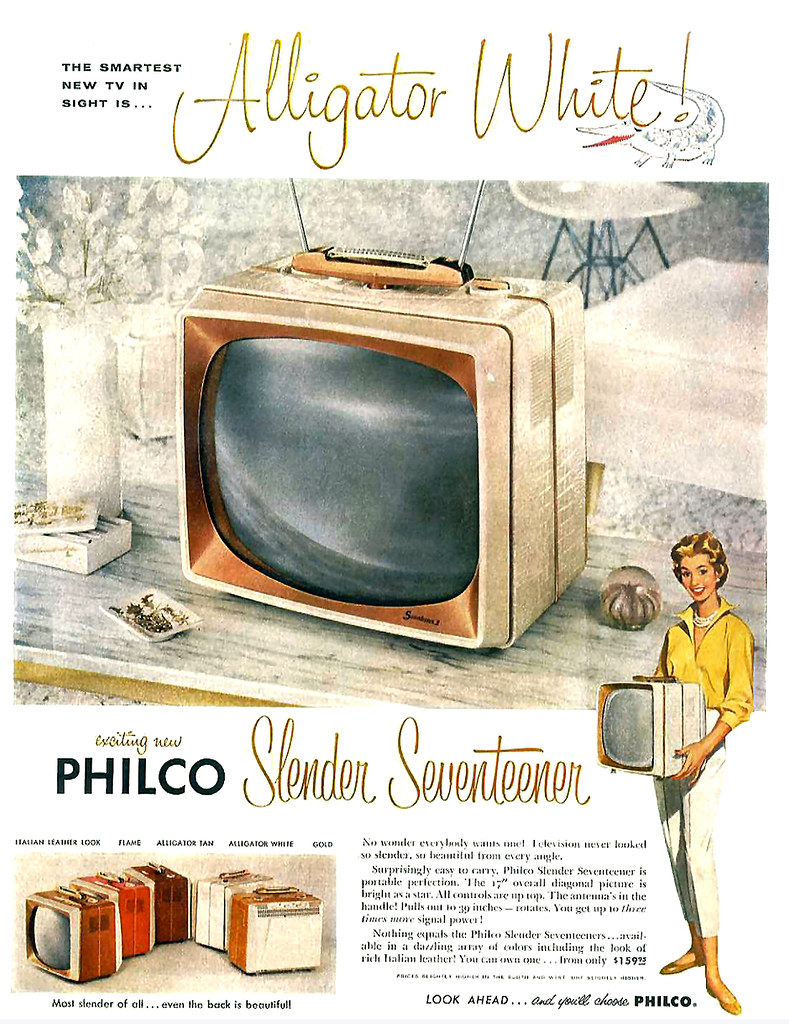There’s Rocket Science in IPTV
I had a feeling this was going to happen. Apple introduced the iPhone and Apple TV earlier this year. The iPhone is shipping at the end of this month, but Apple TV became available in March. We liked the iPhone right away — as did millions of others. Both products have intriguing capabilities, we thought. Watch Mossberg interviewing Jobs at the D: All Things Digital Conference:
Now more of those capabilities are becoming apparent. First, we read about Apple TV being integrated with YouTube. That’s pretty cool. Next, with Apple’s AT&T relationship (exclusive iPhone wireless carrier, formerly Cingular), rumors surfaced on Engadget that AT&T’s U-verse IPTV offering will be using Apple TV as a set-top box option.
How are they reading this rumor in Redmond? If AT&T’s U-Verse, which inherited BellSouth’s Microsoft IPTV middleware, is talking to Apple, will they also provide an X-Box 360 as an option?

Wait a minute: AT&T, Apple TV, iPhone. I see media convergence. The "triple play" is buying voice, data and video services from one provider. The cable guys are selling it, so the telcos need to start selling video — and fast. Add mobile phone service and you’ve got a interesting proposition: a "quad play." According to the San Francisco Chronicle, this is sure to grow:
For consumers, the quad play means they can buy all four services from one provider and pay for it on one bill, increasingly at a reduced price. But the companies say it’s not only about the convenience and savings from one-stop shopping.
They see the new mega-bundles as a collection of services that will increasingly work together, giving you a new level of access and interaction with your entertainment and communications services. The cell phone will play a pivotal role as a portal to receive television or personal content from home, access home voice mail and e-mail, and program digital video recorders.
The move to the quad play is the latest escalation of a battle that’s been building between phone and cable companies, who, because of deregulation, are allowed to compete on each other’s traditional turf. The two industries have cranked up the competition recently, with cable entering the phone market while telecom companies have started to provide television services.
Both sides see the quad play as a way to hold onto customers, who are even more prized and valuable if they can be made to pay for four services.
Can Apple’s iPhone become the ultimate portable TV receiver? Think about that for a minute.
As we’ve mentioned before, Google is sure to play a role in the new IPTV ecosystem. The lifeblood of this new ecosystem will be advertising. According to Accenture’s latest IPTV Monitor, advertising revenue is key, but keeping customers from bolting is more important:
For although 52% of content providers believe targeted advertising will be the principal source of revenue for those in the IPTV industry, 7% also foresee subscription fees for premium content providing a major source of income, as do 41% of network operators. Yet for many telecom operators IPTV’s initial purpose is not to increase revenue. Instead it is both a defensive measure to stem the defection of customers to alternative broadband access providers and a means to increase sales of broadband access.
Where does that leave the two dominant satellite TV players? You can find some clues at the FCC, where Dish Network, DirecTV, Intel, Google, Yahoo!, and Skype are teaming up to bid for some of the spectrum becoming available once TV goes all digital in 2009. Could a WiMAX-style play developing here.
I still think advertising is where the action will be. As IP is inherently two-way communications, and the addressability can come down to the set-top box, the short-, mid- and long-term possibilities are very intriguing. Yesterday’s op-ed piece in Forbes was especially interesting. Enter "Television 2.0," bring together new possibilities. I especially like the idea of targeting two different IP addresses in the same house:
The convergence of TV with the Internet is transforming a technology that has gone largely unchanged for 60 years–a one-way, TV signal broadcast to a screen, whether that screen is a TV, PC or cellphone. Television is on the verge of becoming completely personalized, interactive and enjoyed on-demand.
Imagine a news broadcast where you as the viewer pre-select the types of stories you want to watch; television programming with interactive multiplayer gaming; personalized viewer-specific content and advertising embedded within national television broadcasts; highly localized and efficient Emergency Broadcast System and Amber alerts; viewing and interacting with the vast and growing catalog of high-quality, user-generated content.
By combining the interactivity of Web services and the Internet with the trend toward on-demand and anywhere viewing, the world of television is about to radically change in ways that will dwarf the changes to the Internet referred to as Web 2.0. We’re calling this change "Television 2.0."
These changes are important. Fueled by the (sometimes reluctant) acceptance of open standards and technology advances, the newly amalgamated television, telecommunications and Internet industries are jointly forging new paths to innovation. What’s in store for all of us is nothing short of exciting.
Think back just a few years to how you received television, telephone and Internet services. Chances are it involved separate providers for television and phone service, one of which might have provided broadband Internet service. And just how fast was the Internet connection then compared with now?
Today an increasing number of households are getting "triple play" service–one provider delivering phone and television services over the same "pipe" that brings Internet into the home. This is a hugely important trend, which from the very beginning enables three disparate communications systems to work together increasing the functionality and utility of all three.
Whereas once interacting with the television set meant using the remote control to change channels or adjust the volume, today you can record multiple shows simultaneously and set user preferences. Tomorrow you’ll be able to apply rules regarding those preferences to your entire home communications system.
Who wants to be interrupted by a phone call during a favorite television program or movie? Simply instruct your system that you do not want to be disturbed and all your calls are delivered to voicemail while you’re watching TV. But what if it’s an emergency call from a family member? You can instruct the system to only pass along calls from people you allow.
Caller ID already helps us screen calls, and Television 2.0 will let us select which voicemail greeting to play for denied callers: serious for the boss or fun and personal for friends. Since your phone is now tied to your TV, why can’t all phone calls become video calls? These are enhanced functionalities we can all use, but we’re just scratching the surface.
Also, when television is delivered as a digital signal over an Internet connection, the program stream itself can be manipulated. When television was delivered over the air to antennas, each station was limited to one macro broadcast. What you watched was exactly the same as what your friend across town watched.
With the advent of digital television delivered to set top boxes, the paradigm shifted. Particularly important for advertisers, content can be targeted based on geography. You and your friend can still watch the same program, but now the ads are different, based on where in town each of you reside. This is no small market. Kagan Research says that in 2006, local ads sold by U.S. cable companies exceeded $4.3 billion.
In the Television 2.0 world, targeting gets personal. Not only are the commercials different for you and your friend across town, the commercial viewed by parents on the downstairs on one TV will be different than the commercial seen by the kids watching TV upstairs in the same house. With Internet Protocol (IP) set top boxes, demographic targeting is already upon us.
One key difference between the television of today and Television 2.0 is that it is delivered over an IP connection. Unlike television delivered over the air, IP connections are bidirectional. Soon the individual television experience will exploit this bidirectionality.
If advertising can be targeted to individual set top boxes, why can’t programming? Think of the news program referenced earlier. Consider how much news is taped for local and national broadcasts every day. Television 2.0 will make it possible to watch any of it. If you’ve relocated from a different part of the country, Television 2.0 will let you see the sports news about your old home team during your new local news program.
If such programming can be done with the news, it can be done with anything. Look forward to seeing more personal selections of sports, music and other entertainment programming. Programming can become interactive too. Instead of merely watching your favorite big city detectives solve crimes, you can lend a hand.
Many universities are adopting distance learning programs. Want the best education? Why not create a hybrid curriculum from the top universities around the world and attend classes from the comfort of your living room? Television 2.0 makes that possible.
Arguably the best part of Television 2.0 is that all these advances are happening independently from the TV itself. So, none of the investment in your state-of-the-art home theater system went to waste. Television 2.0 will just make that home theater all the more spectacular.
In Television 2.0, the possibilities are endless, and largely because the technology companies behind all these innovations are learning to play nicely together. The acceptance of open standards is the fuel powering these innovations. Between the television network and your television set lies the equipment and networks of many different companies all playing a different but complementary role in the Television 2.0 ecosystem.
Fo ‘shizzle: this is not the old TV we grew up with.
